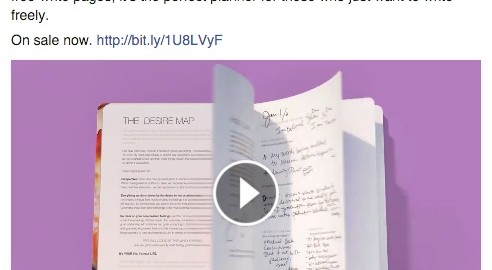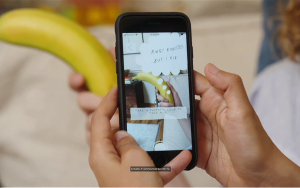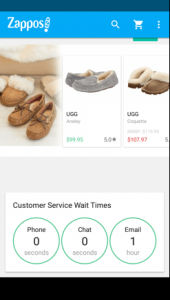Let’s face it: blogging isn’t just about blogging any more.
If your weekly blogging plan ends with publishing the blog post — and maybe sharing it to Facebook and Twitter — you’re no longer even keeping up with the competition. You’re falling way behind.
Social media dominates the marketing conversation in almost every field, and should be an integral part of your content marketing strategy.
But with everything else you have to do, how can you possibly also be expected to play big in the social media field?
The answer is a microcontent strategy.
What is microcontent?
In its most basic terms, microcontent is what you share on your social media pages, but when you pay attention to what you’re sharing and how, it can become more powerful than that.
The power of microcontent comes from the fact that you can create and repurpose it from existing, long-form content.
If you tried to create a ton of original marketing content specifically for Facebook, Twitter or any other social media network, it would add a lot of time and costs to your marketing budget.
But if you take content you’ve already created for your blog or website and chop it up into micro-sized pieces, you’re getting more value from the original piece and adding value to your audiences on various social networks.
Remember the hierarchy of audiences; our goal is always to draw our audience further into our inner circles. Social media’s purpose, then, is to draw people to the blog, and the blog’s purpose is to draw people onto our mailing list, and so on.

Therefore, the strategy behind what you share on social must be, at least in part, aimed at getting people to move away from social and onto your website. That’s where microcontent can come in: as an appetizer for the meatier content on your website.
Microcontent can be text, images, video, or audio that is derived from a larger piece of content.
For example, quotes or tips from a blog post or ebook can be added to an image. Small pieces of an infographic or stills from a video can be shared as stand-alones. Clips from a longer video or audio can be posted as teasers.
The idea is to wring as much value as possible from the big content by chopping it down into component parts.
How to “do” microcontent.
The brands that do microcontent most successfully focus on four main steps, which I’ve outlined below. I’ve also included some examples of brands I follow and who are playing the microcontent game with aplomb.
I’ve created a worksheet to help you develop your own microcontent plan. Click here to download it for free.
1. Be yourself.
Microcontent is a perfect place to let your brand voice shine. Is your brand funny? Elegant? Quirky? Edgy?
I love to share funny grammar quips, because I’m a writer and a notorious grammar-lover. This fits with the quirkier side of my personality and my brand.
Leonie Dawson is a good personality to watch for an example of someone who has fully embraced her voice. She frequently posts funny or poignant Instagram photos of herself, her family, and her team, who are all a big part of her brand.
Her team is also adept at reusing images and pieces of images that Leonie creates, like these weekday illustrated messages that are instantly recognizable as Leonie. The illustrations may have been done for a larger product, like her planner or wall calendar, and then reformatted for social media.

2. Focus on your story.
Marketing is all about telling your brand story, so each piece of microcontent should tie back to that. I advocate knowing exactly why you’re producing any blog post, and the same goes for microcontent; unless you understand what you hope to get out of producing and publishing it, it’s not worth your time.
Melanie Duncan is a pro at keeping everything she produces precisely on-brand. This Facebook post is actually a snippet from a larger image on her website.

3. Choose your medium.
“You produce content for Vine, Medium, SoundCloud, Instagram, Tumblr, and Pinterest. If you can’t, you pick the things that make the most sense,” Gary Vaynerchuk says. “In the old world, that was predicated on money, but now it’s predicated on time…You have to create a strategy based on your audience and what you’re trying to achieve.”
As a micro-business owner, you almost certainly have to prioritize for one or two social media channels. For most of us, they will be where we’ll get the most exposure — and that will mean Facebook. But beyond that, you may find that Twitter, Instagram, Pinterest, or another channel will resonate best with your audience.
- Decide which platforms are best for your message and reaching your audience.
- Understand the best formats for that platform — video? short text? images?
- Create your content to play to the platform’s strengths.
Danielle LaPorte is fascinating to watch as she and her team make the most of their social followings. Her Truthbombs are an excellent example of microcontent, but she’s also branching out. She recently shared this beautiful animated video of her 2016 Desire Map Planner on Facebook, taking advantage of the Facebook’s current preference for video content.

4. Refine and focus on what works.
You may love doing Dubsmash videos, but if your audience doesn’t resonate with them, they’re not going to support your brand. A big part of microcontent is figuring out what works, and then making it repeatable.
Carrie Green of Female Entrepreneur Association has this down to a science. She and her team produce dozens of “quote images” with empowering quotes for women and women business owners in her brand style and post multiple images daily to her Facebook page. You might think this would get old, but not according to her numbers. I know I’ve seen this particular quote on her page multiple times, with multiple different images — yet look at the number of likes and shares she gets. Proof positive that doing what works — works.

Take the next step and download my Create A Microcontent Plan worksheet for free. Put time in your calendar right now to go through the worksheet and make a plan to create your own microcontent and up your social media game to play with the big brands.
Download the worksheet for FREE.
And if you found value in this post, please take a moment to use the buttons below to share it with your fellow entrepreneurs. They’ll thank you!
Digital & Social Articles on Business 2 Community(89)
Report Post








